A longpass filter can block unwanted portions of the spectrum, whereas a bandpass filter can target specific spectral signatures.
James Gardiner, Midwest Optical Systems
Shortwave IR (SWIR) imaging has seen a surge in use in recent years, playing an important role in imaging agricultural products, food, pharmaceuticals, and high-heat glass and metal manufacturing. Given the strong absorption of moisture within the SWIR range, users can check fill levels in opaque bottles, visualize underlying features such as anti-counterfeiting security codes, or use the technology for a wide range of other applications.
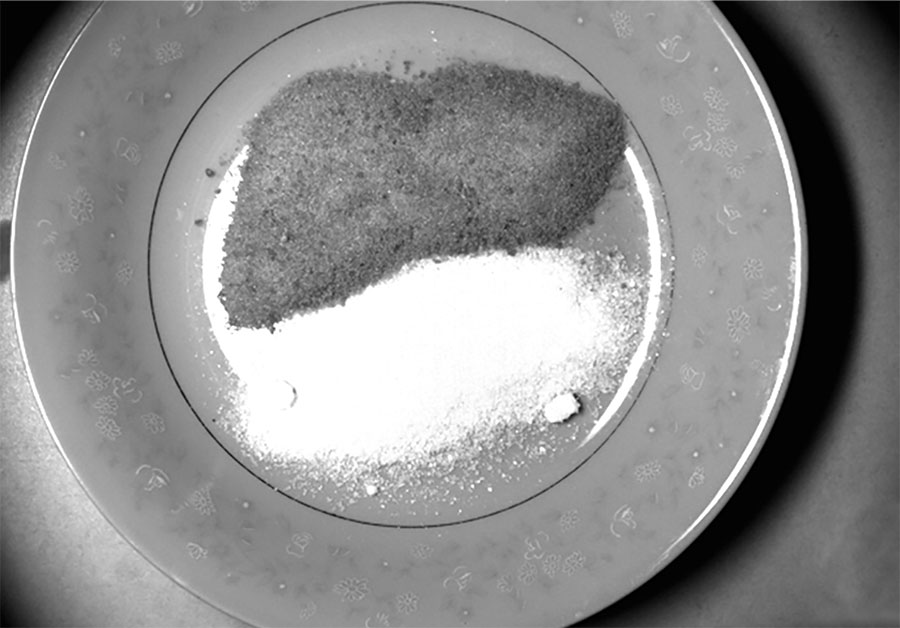
Sugar (top) and salt may appear the same in the visible range but appear different in SWIR. Courtesy of Midwest Optical Systems.
Innovations in sensor technology, availability, and cost have opened the door for more and more applications that can be addressed with NIR and SWIR. Just like with monochrome and color cameras, picking the right filter can mean the difference between a poor image and an acceptable one.
One of the most critical advancements has been in innovation sensor technology. Recent SWIR cameras have integrated both quantum dot SWIR sensors and Sony’s new IMX990 and IMX991 SenSWIR sensors, which are unique in that they are sensitive to the visible, NIR, and SWIR portions of the spectrum.
For quantum dot cameras, sensor manufacturers use CMOS sensors as the core component. By applying a carefully designed thin layer of colloidal quantum dots (CQDs) through a monolithic process directly to the CMOS readout, the resulting sensor is sensitive in both the visible and the SWIR. This is a cost-effective method of producing a SWIR-sensitive sensor.
Sony built its SenSWIR sensor by using both a layer of indium gallium arsenide (InGaAs) photodiodes and a layer of silicon readout circuits. The
layers are manufactured together through a copper-to-copper bonding
process. Using a thinner indium phosphide (InP) top layer allows both visible and SWIR light to transmit and be absorbed by the various layers. This wide spectral range can be a benefit, but many users will buy the camera specifically for its spectral response in the SWIR.
To make these quantum dot cameras “SWIR only,” an optical filter is the most cost-effective method. A longpass filter is required to isolate the target spectrum and remove spectral noise. The filters are defined by the wavelength at which they transition from blocking light to passing light.
As SWIR sensor and camera technologies advance, their use is becoming more common. Lower costs, higher availability, and more mature technology can be found in an increasing number of machine vision solutions.
Figure 1 provides examples of the
interaction between a longpass filter and the spectral response curve of the latest CMOS and SWIR sensors. The unwanted lower wavelengths in the
visible region can be blocked, while providing a broad range of the spectrum to work in. This offers greater flexibility, but for cases in which a specific wavelength is required or a narrower band of the spectrum is targeted, a bandpass filter is needed.
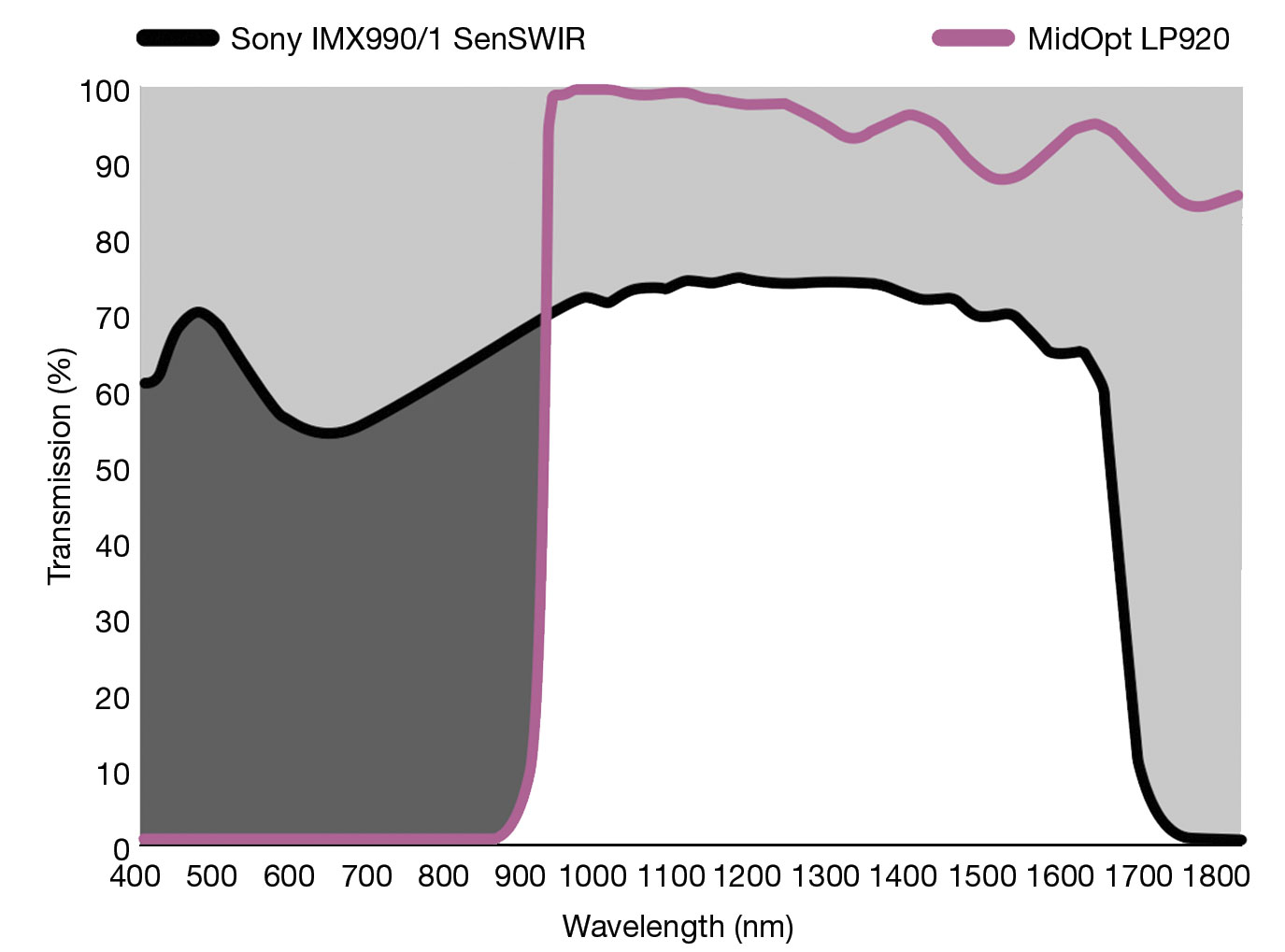
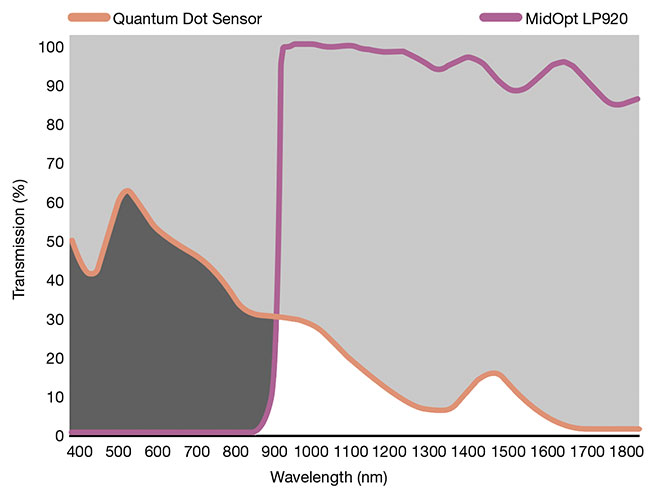
Figure 1. A MidOpt LP920 filter blocks the visible wavelengths and only allows SWIR to pass. The graphics depict the filter’s action on Sony’s new IMX990 and IMX991 SenSWIR sensors (top) and on quantum dot sensors (bottom). Courtesy of Midwest Optical Systems.
Bandpass filters allow focus on specific spectral bands, usually targeting a material’s spectral fingerprint or spectral lines, which are the specific wavelengths at which a material or substance allows photons to pass through, absorb, or reflect. Targeting these spectral fingerprints or lines can maximize contrast for imaging.
What follows are application
examples in which pairing a bandpass filter with a spectral fingerprint can help to create high-contrast images, with minimal spectral noise.
Inspecting medical devices
When inspecting electrocardiogram
(EKG) electrode patches, device manufacturers look for the absence or presence of the optically clear adhesive — after manufacturing and packing. Quality control for medical devices and products is vital; if an EKG patch does not adhere to a patient, it will not work, potentially putting the patient’s life in jeopardy.
Using a shortwave IR bandpass filter targeting the 1440- to 1460-nm wave range makes it possible to see how the part of the patch with the adhesive absorbs the photons (dark strips) while the uncoated patch reflects the light back, creating contrast (bright area) (Figure 2). In the visible, even without the interference of the packaging, it is difficult to find a consistent solution for detecting the optically clear adhesive using a standard visible camera.
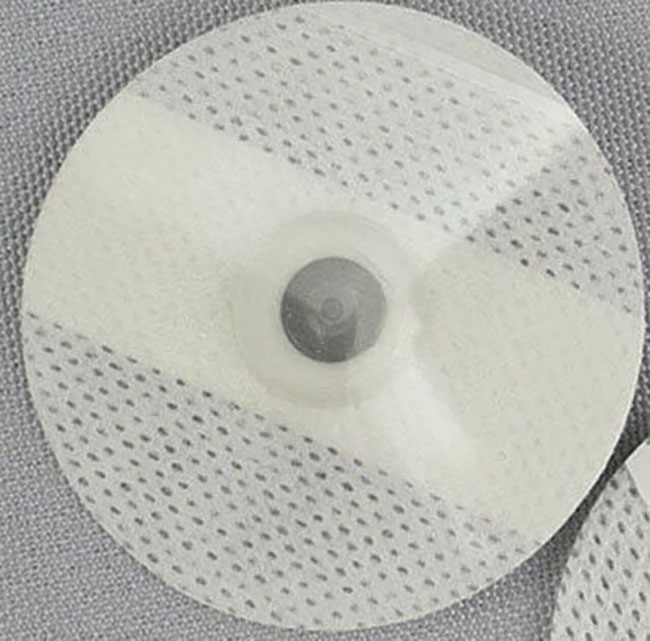
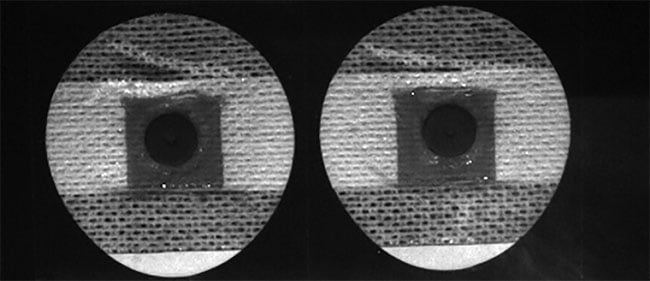
Figure 2. The adhesive on an EKG patch cannot be seen easily with the naked eye or under visible imaging (top). A Bi1450 1450-nm SWIR filter makes the adhesive visible (bottom). Courtesy of Midwest Optical Systems.
SWIR imaging is a powerful tool for
the inspection of silicon wafers. Semiconductor wafers and chips made of silicon are transparent to SWIR light. Front- or back-side illumination of
silicon-based devices with SWIR lighting can reveal voids such as air bubbles. If not caught, an entire batch of electronics can be wasted if it is printed on a defective wafer.
When imaging the wafer at 1550 nm, defects such as air voids and contaminants can be created during the bonding process. By counting the circles around the defect, manufacturers can determine how many layers from the surface the defect began (Figure 3). A Bi1550 1550-nm filter would be ideal for isolating the optimal wavelength for contrast.
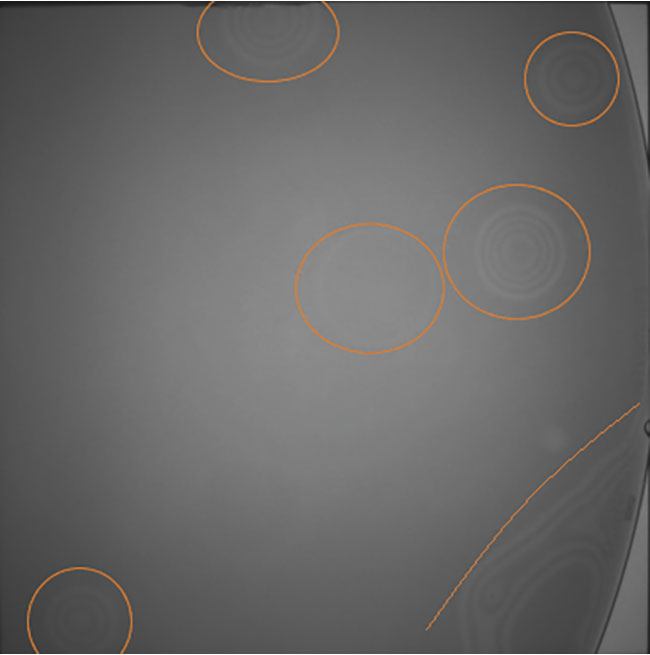
Figure 3. A silicon wafer imaged at 1550 nm. When imaging at this wavelength, contrast is created among the defects on voids in the wafer bond layers. The circles around the void show how many layers go down to where the void began. Courtesy of Midwest Optical Systems.
The image on page 36 shows two common substances that appear almost identical in the visible: sugar and salt. When using the eye or a visible camera, it can be extremely hard to tell the difference between the two. When imaged in the SWIR spectrum using 1200-nm filters, contrast is created due to sugar and salt crystals’ contrasting reflectance levels of 1200-nm SWIR light. This imaging and inspection method is often used for chemical and purity testing. When imaged, potential contaminants can easily be seen due to the difference in gray levels compared with the rest of the image.
SWIR LEDs
LEDs are the first choice in machine vision lighting, given their energy
efficiency and their ability to illuminate wide fields of view. Lighting companies such as CCS, EFFILUX, Metaphase, and Smart Vision Lights offer SWIR-specific lights that incorporate InGaAs LED diodes.
Traditional SWIR bandpass filters, however, were not designed for use with the latest SWIR LEDs. The first generation of SWIR bandpass filters hit the market decades ago and were
designed for use with narrowband SWIR lasers that were used in scientific, military, and telecom fiber applications. When a narrowband filter was paired with broadband SWIR LEDs, the
traditional narrowband SWIR filter cut too much of the SWIR LEDs’ spectrum and power. Engineers are currently evaluating the next generation of SWIR bandpass filters designed specifically for use with the SWIR LEDs used in machine vision. These new filters are designed with a broader passband to match the sweet spot of the LED spectrum curve, and they should be commercially available by the end of 2022 or by early 2023 (Figure 4).
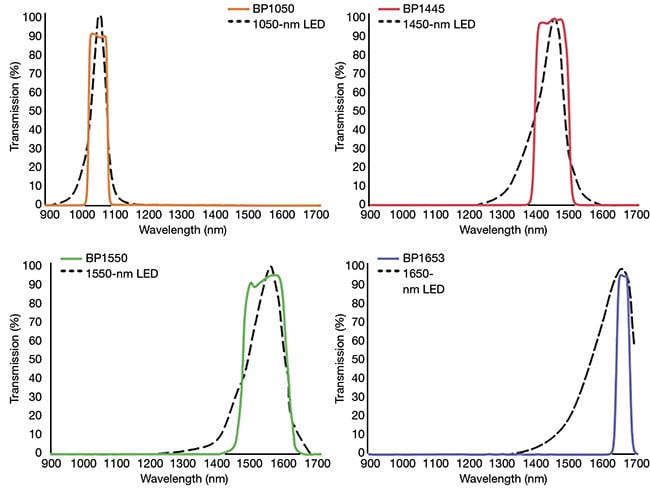
Figure 4. Pre-production filters relative to SWIR LED transmission. Courtesy of Midwest Optical Systems.
Extended SWIR
Recent advancements have pushed the InGaAs spectral range beyond
1700 nm, up to as high as 2.5 μm. This has made imaging more elements
possible. These elements include
carbon and methane gas, which both
have unique spectral lines located
between 1.7 and 2.5 μm. These spectral lines cannot be properly imaged using a standard-range SWIR sensor. Like traditional InGaAs sensors, optical filters are critical for success. Companies are continuing to innovate to meet the industry’s needs with longpass
and custom bandpass filters that are
designed specifically for extended SWIR applications (Figure 5). These optical filters block visible and lower-nanometer SWIR light, only allowing photons in the extreme SWIR range to pass to the sensor. With spectral sensitivity being much lower in the extended SWIR wavelengths, filtering is critical to prevent image and sensor noise that occurs at lower-band wavelengths and that can overpower the sensor and image.
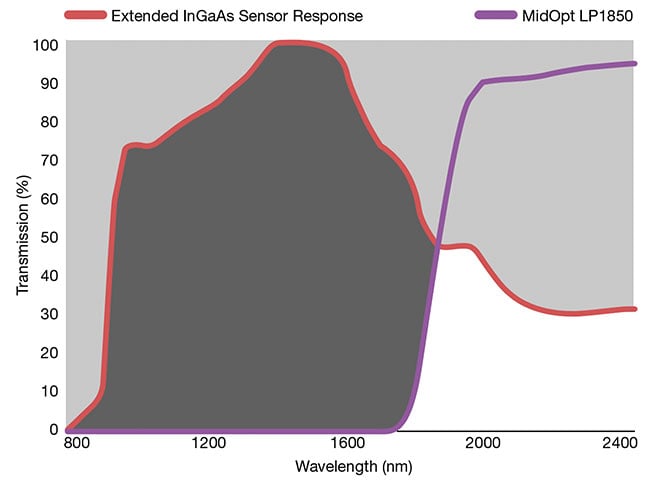
Figure 5. An LP1850 filter allows the sensor to see only extended SWIR wavelengths. Courtesy of Midwest Optical Systems.
As SWIR sensor and camera
technologies advance, their use is becoming more common. Lower costs, higher availability, and more mature technology can be found in an increasing number of machine vision solutions. Deployment of complete vision systems will become increasingly common in machine vision and industrial automation. With more camera companies taking interest and developing new cameras around SWIR technology, new investments will be made into the market. Additionally, supporting components such as filters, lenses, and optics will continue to be developed to support this growing segment of SWIR imaging.
Meet the author
James Gardiner is a business development manager with Midwest Optical Systems. With more than 10 years of experience in lighting, cameras, and optics within the machine vision sector, he views the industry from many different angles. Gardiner has also served as the youngest elected board member on the Advanced Imaging Association (now A3) board; email: [email protected].